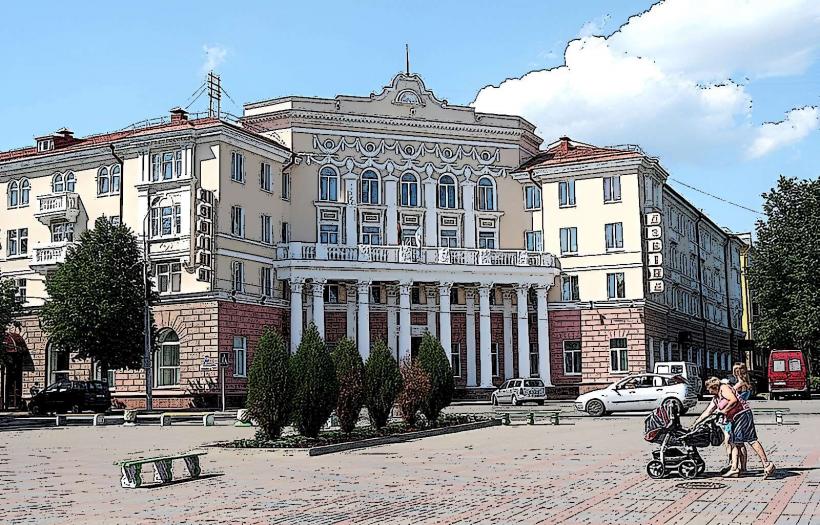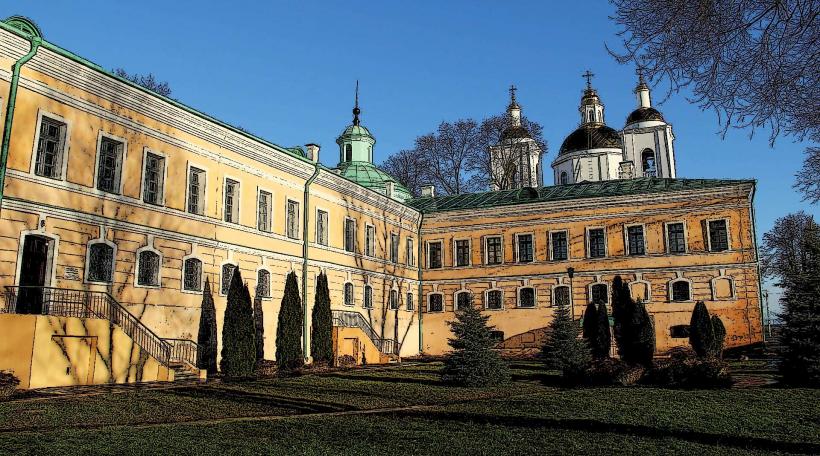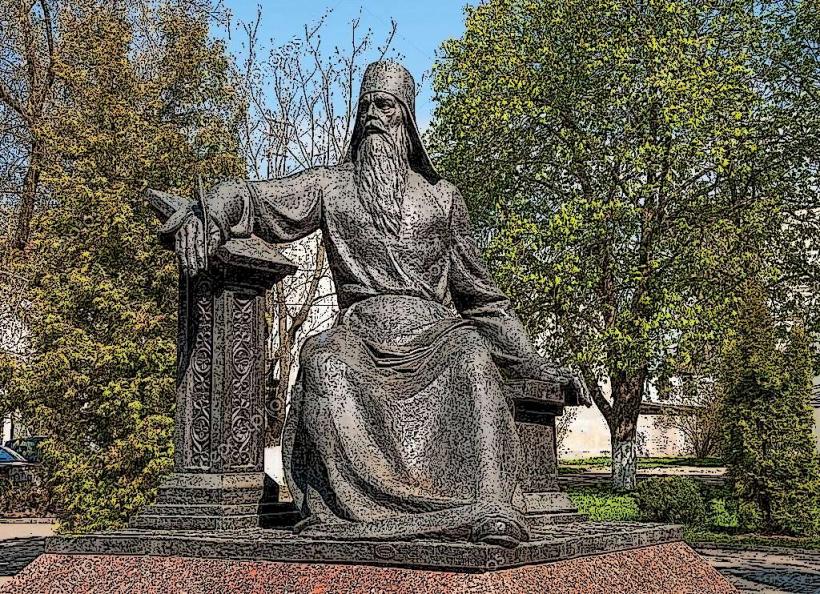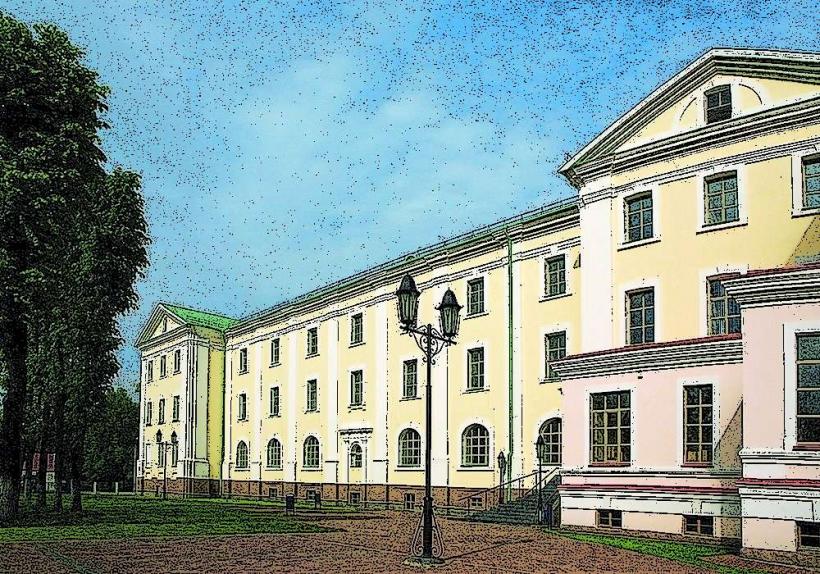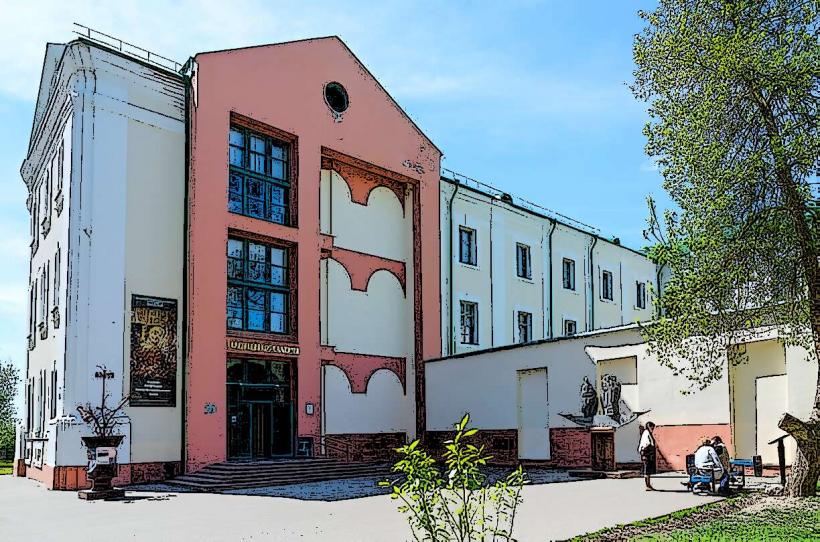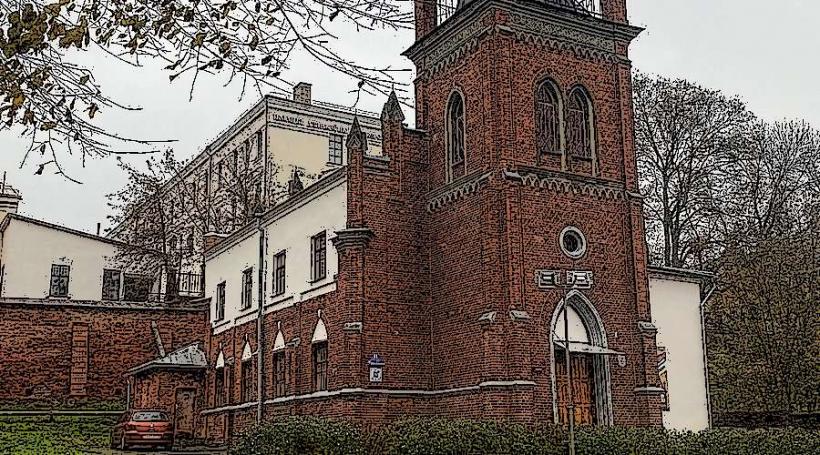Information
Landmark: Euphrosyne of Polotsk MonasteryCity: Polotsk
Country: Belarus
Continent: Europe
The Euphrosyne of Polotsk Monastery (also known as the Monastery of Saint Euphrosyne of Polotsk) is a prominent religious and historical site in Polotsk, Belarus. It is dedicated to Euphrosyne of Polotsk, one of the most revered figures in Belarusian Orthodox Christianity. The monastery, founded in her honor, has deep significance both as a religious center and as a cultural heritage site.
1. Euphrosyne of Polotsk:
Euphrosyne of Polotsk (also known as Yefrosinia or Euphrosyne the Princess) was a 12th-century princess and abbess, and is one of the most important saints in Belarusian and Eastern Orthodox Christian history. She was born into the royal family of Polotsk and became one of the first women in Belarus to embrace a monastic life.
Royal Background: Euphrosyne was the daughter of the Prince Svyatoslav of Polotsk. Despite her royal status, she chose the monastic life and devoted herself to religious pursuits. She is considered a prominent figure in the Christianization of the Polotsk principality.
Monastic Life and Legacy: Euphrosyne is best known for founding the Euphrosyne of Polotsk Monastery and for her contributions to the development of Christianity in the region. She was deeply involved in religious education, charity, and the promotion of Christian teachings among the people of Polotsk and beyond.
Canonization: Euphrosyne was canonized as a saint in the Russian Orthodox Church and the Belarusian Orthodox Church. Her feast day is celebrated on May 23, which marks her death in 1173.
2. The Euphrosyne of Polotsk Monastery:
The monastery is one of the most significant religious sites in Belarus and has been central to the Christian history of the region. It is a place not only of spirituality and prayer but also of cultural and historical importance. The monastery is associated with the founding and the enduring legacy of Euphrosyne of Polotsk.
History and Foundation:
The Euphrosyne of Polotsk Monastery was founded by Euphrosyne herself in the early 12th century. The monastery, located in Polotsk, became a center of Orthodox monasticism and Christian education. Over the centuries, the monastery played an essential role in the spiritual and cultural life of the region.
Religious Significance: The monastery became a center for the Orthodox Christian faith in Belarus, attracting monks, pilgrims, and learned scholars from across the region. It was also a major center for the production of religious texts and was known for the creation of illuminated manuscripts.
Cultural Impact: In addition to its spiritual functions, the monastery contributed significantly to the literary and cultural life of Belarus. It was a place of scholarship where religious texts were copied and preserved, and Christian teachings were disseminated to the people.
Architecture:
The monastery complex includes several buildings, such as:
The Church of Saint Euphrosyne: The main church of the monastery is dedicated to Saint Euphrosyne of Polotsk. It has been rebuilt and renovated over the centuries but continues to serve as a central place of worship. The church features Orthodox iconography, traditional architecture, and beautiful religious artwork.
The Monastery Grounds: The monastery includes various auxiliary buildings, such as cells for monks, chapels, and gathering places for religious education. These structures, although modified over time, maintain the traditional monastic layout.
Iconostasis: Like other Orthodox churches, the monastery features a magnificent iconostasis, a screen of icons that separates the altar from the rest of the church. The iconostasis is an important feature of Orthodox liturgical spaces, and it is often beautifully decorated.
Role in the Development of Orthodox Christianity:
Throughout its history, the Euphrosyne of Polotsk Monastery has been a center of Orthodox Christian life in Belarus. Its role extended beyond religious functions, as it also acted as a beacon for education, literature, and art in the region. Many scholars and religious figures associated with the monastery contributed to the spread of Christianity and the written word in Eastern Europe.
- The monastery’s library and archives were important in preserving Christian texts and historical documents. It is believed that some of the early manuscripts created at the monastery have survived to this day, offering a glimpse into the religious and literary history of Belarus.
3. The Monastery Today:
Today, the Euphrosyne of Polotsk Monastery continues to serve as an active place of worship, prayer, and reflection. It is a place for pilgrimage for those seeking to honor Saint Euphrosyne and the legacy she left behind.
Restoration Efforts: Throughout its history, the monastery has faced numerous challenges, including damage from fires, wars, and changing political regimes. However, efforts to restore and preserve the monastery have been ongoing, ensuring its continued role in Belarusian religious and cultural life.
Museum and Cultural Center: In addition to its religious functions, the monastery also houses a museum that showcases its historical and religious heritage. The museum features artifacts related to the monastery’s history, including icons, manuscripts, and religious objects used in the monastery over the centuries.
Educational Role: The monastery remains a center for spiritual education. It offers a variety of programs and activities for the faithful, including opportunities for monastic life and spiritual retreats.
4. Cultural and National Significance:
The Euphrosyne of Polotsk Monastery holds a special place in the spiritual and cultural heritage of Belarus. It serves as a symbol of the country’s Christian roots, its cultural identity, and the role of women in religion and society.
Patronage of Women: The monastery is particularly significant because it honors the legacy of a woman in a male-dominated religious context. Saint Euphrosyne is an inspiring figure for many in Belarus, especially in the context of her spiritual leadership and contributions to religious life.
National Pride: Euphrosyne’s role in shaping the religious and cultural identity of Belarus continues to be celebrated today. The monastery is a source of national pride, and the figure of Saint Euphrosyne is often depicted in Belarusian art and literature as a symbol of faith and perseverance.
5. Visiting the Monastery:
The Euphrosyne of Polotsk Monastery is a popular destination for those interested in Belarusian history, Orthodox Christianity, and medieval culture. Visitors can explore its rich heritage and witness the continuation of Eastern Orthodox traditions. The monastery also offers a peaceful and contemplative environment for reflection and spiritual growth.
- Location: The monastery is located in Polotsk, which is in northern Belarus, making it accessible to both local and international visitors.
- Tours and Pilgrimages: Visitors can participate in guided tours of the monastery, learning about its history and significance. Pilgrims also visit the monastery to pray and honor Saint Euphrosyne.
Conclusion:
The Euphrosyne of Polotsk Monastery is a key religious and cultural institution in Belarus, honoring the memory of one of the country's most revered saints. Founded by Euphrosyne of Polotsk herself, the monastery has been a center for spirituality, education, and cultural development for centuries. Today, it remains an active and vibrant place of worship and a symbol of Belarusian religious and cultural heritage.


